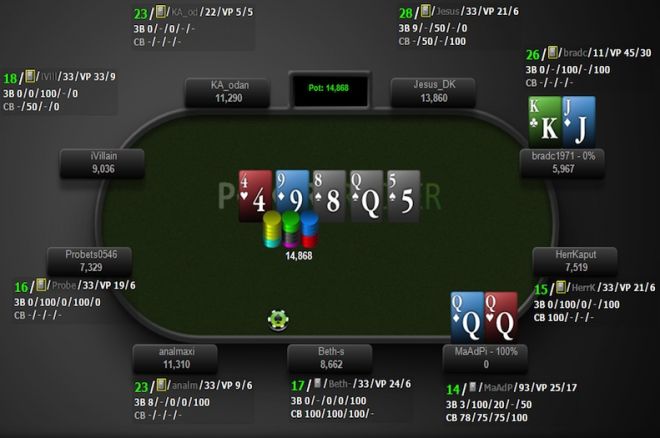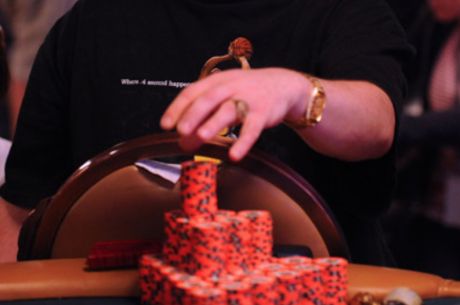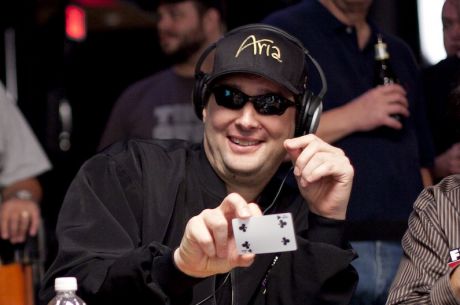A Guide to Setting Up Your Online Poker Heads Up Display (HUD)

Do you use a Heads Up Display (HUD) while you are playing online poker? What statistics does it relay to you? More importantly, do you know what this information means and how to interpret it? By the time you have finished reading this article you will.
What is a HUD?
A Heads Up Display or ��HUD�� is a tool online poker players use to help them make decisions at the virtual felt. In times gone by, you had to purchase a HUD separately, but nowadays one comes packaged with the two major poker tracking software suites PokerTracker and Hold��em Manager.
Long story short, the tracking software reads the hand history files saved on your computer and creates various statistics based on the information in them. This information is then displayed on your screen, in real time, as you play.
While the use of HUDs has caused plenty of debate over the years, they are within the terms and conditions of most online poker sites.
What HUD Stats Should I Use?
There are literally hundreds of different statistics available to you once you purchase some tracking software, allowing you to analyze your opponents in minute detail if you wish. However, while you are playing you don��t want your screen completely covered in numbers because too much information can be overkill.
I��ve used a HUD for several years. I have tried a set-up in which I have dozens of statistics showing, and I��ve tried an opposite approach, too, by displaying only a few. Below are the statistics that I have included in my current set-up which I use when playing 6-max. cash games and all multi-table tournaments.
VP$IP
��VP$IP�� (standing for Voluntarily Put money In Pot) should be the first statistic on any HUD because it shows at a glance how active a player is by the frequency he or she is putting chips in the middle voluntarily (that is, not when bets have to be made such as when in the blinds). With this statistic you can quickly get a grip on how tight or loose a player is, possibly as quickly as within 40-50 hands.
PFR
��PFR�� stands for Preflop Raise and, as you would imagine, indicates how often a player raises before the flop. Coupled with VP$IP, the PFR helps you to deduce if a player is tight-aggressive, tight-passive, loose-aggressive, or loose-passive before the flop.
Agg
The ��Agg�� or aggression statistic displays how often a player bets or raises after the flop in relation to checking. The higher this number is, the more aggressive a player is. An Agg of 1 or less is very passive, so if a player with an Agg this low begins betting you better have a good hand with which to continue!
3Bet
Again, ��3bet�� is self-explanatory �� it shows how often a player three-bets (that is, reraises an opening raise) preflop.
Fold to 3Bet
If a player is raising a lot preflop and has a high ��Fold to 3bet�� frequency, feel free to three-bet that player with a wide range of hands. You��re going to win the pot right there and then often enough to make it profitable even when the player does call or four-bet you.
Cbet Flop
Some players habitually fire a continuation bet on the flop without a second thought. You can find out quickly who these players with the ��Cbet Flop�� statistic. If they are betting every flop, you can float the flop and see if they take another stab on the turn. If they shut down thereafter, you may have a chance to steal the pot on the turn or river.
Fold to Flop Cbet
��Fold to Flop Cbet�� represents the other side of the previous statistic. If a player is calling every single flop continuation bet, you could do worse than to restrict yourself to making a c-bets with a strong range.
Turn Cbet
The ��Turn Cbet�� stat is similar to the one tracking flop continuation bets, but is instead focused on the turn. Here you can see how often a player fires two barrels once he or she has raised preflop.
Fold to Turn Cbet
Like the ��Fold to Flop Cbet,�� knowing a player��s ��Fold to Turn Cbet�� frequency can also give you the chance to steal a pot. Some players like to call a lot of continuation bets on the flop, but then give up to another bet on the turn. If you come across one of these players, then you should be stabbing at a lot of turns even if fourth street doesn��t improve your hand.
Attempt to Steal LP
Couple the ��Attempt to Steal LP�� statistic with ��VP$IP�� and ��PFR�� and you��ll soon have an accurate read on whether or not someone loves to attempt to steal the blinds from the cutoff or the button (i.e., late position).
Attempt to Steal SB
��Attempt to Steal SB�� is like the statistic above except refers to steal attempts when the action folds all of the way around to the player in the small blind.
Fold to LP Steal
��Fold to LP Steal�� refers to how players respond from the blinds against late-position steal attempts. If one of the players in the blinds hardly ever folds to a late position raise, then try not to steal too widely, or perhaps raise larger than usual when you have a legitimate hand. Like most statistics, combine them with others listed here.
For example, a player who has a high ��VP$IP,�� a low ��PFR,�� a low ��Fold to LP Steal,�� and a high ��Fold to Flop Cbet�� can still be stolen from a lot because those stats suggest the player is playing fit-or-fold poker, giving up a lot when not holding big hands or hitting flops hard.
Fold to SB Steal
Finally, ��Fold to SB Steal�� refers to players who give up their big blinds when the small blind opens with a raise. This scenario comes up often enough to make it well worth knowing players�� tendencies when it occurs.
What Are the Disadvantages of Using a HUD?
You may have gotten this far into the article and thought that HUDs sound amazing, and I think they are. They allow you to play more tables at once and to make more accurate decisions as you play. Yet there are some disadvantages to consider, too.
The first is that you can sometimes start playing on autopilot when using a HUD. You almost start playing ��by the numbers�� and not actually playing poker as such, which can sometimes take a lot of the fun out of the game.
Also, you can become overly reliant on the HUD. Like any other program, a HUD can stop working when your computer updates a file or if a poker site updates their software. PokerTracker and Hold��em Manager are normally very good at releasing a patch shortly after these downtimes, but you could still be without a HUD for a few days until such a patch is released.
Another thing to consider is that online poker sites may not allow HUDs forever. Many are switching their focus to recreational players and are attempting to protect these fun-loving customers from being gobbled up by those who are more serious. If you��re used to playing with the aid of a HUD and your favorite poker site does decide to ban HUDs, you��ll be up the proverbial creek without a paddle.
Lastly, you can��t really use a HUD in the live environment! This sounds obvious, but when you step into the live arena you��re going to have to stand on your own two feet and work out for yourself opponents�� ��VP$IP�� and other tendencies.
HUDs are powerful tools if used correctly, but are no substitute for actual reads. Remember this, too. The only thing worse than having no information is having incorrect information. Learn how quickly each statistic becomes truly representative and worth acting upon, and don��t fall into the trap of thinking someone is too tight, too loose, or too aggressive until you have a significant sample size from which to work.
Good luck at the tables.
Get all the latest PokerNews updates on your social media outlets. Follow us on Twitter and find us on both Facebook and Google+!








